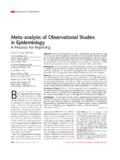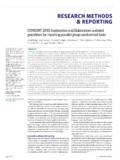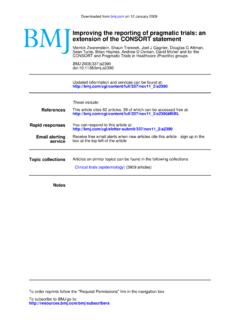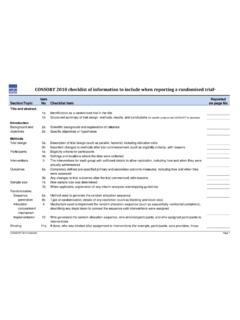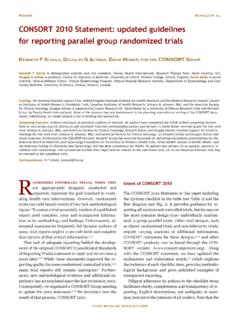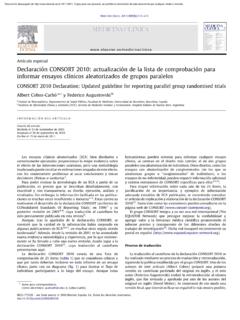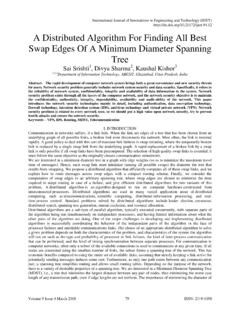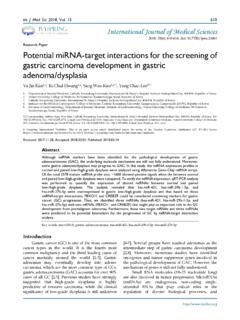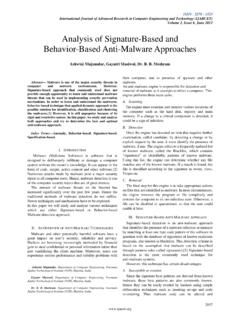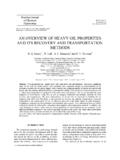Transcription of CONSORT 2010 Statement CONSORT 2010 …
1 CONSORT 2010 Published online March 24, 2010 Webappendix 1 See Online/Editorial (10)60456-4 See Online/Comment (10)60413-8 Family Health International, Research Triangle Park, NC, USA (Prof K F Schulz PhD); Centre for Statistics in Medicine, University of Oxford, Wolfson College, Oxford, UK (Prof D G Altman DSc); and Ottawa Methods Centre, Clinical Epidemiology Program, Ottawa Hospital Research Institute, Department of Epidemiology and Community Medicine, University of Ottawa, Ottawa, ON, Canada (D Moher PhD)Correspondence to: Prof Kenneth F Schulz, Family Health International, Research Triangle Park, NC 27709, USA 2010 Statement : updated guidelines for reporting parallel group randomised trialsKenneth F Schulz, Douglas G Altman, David Moher, for the CONSORT GroupIntroductionRandomised controlled trials, when appropriately designed, conducted, and reported, represent the gold standard in evaluating health-care interventions. However, randomised trials can yield biased results if they lack methodological To assess a trial accurately, readers of a published report need complete, clear, and transparent information on its methodology and findings.
2 Unfortunately, attempted assessments frequently fail because authors of many trial reports neglect to provide lucid and complete descriptions of that critical 4 That lack of adequate reporting fuelled the development of the original CONSORT (Consolidated Standards of Reporting Trials) Statement in 19965 and its revision 5 years 8 While those statements improved the reporting quality for some randomised controlled trials,9,10 many trial reports still remain Furthermore, new methodological evidence and additional experience has accumulated since the last revision in 2001. Consequently, we organised a CONSORT Group meeting to update the 2001 8 We introduce here the result of that process, CONSORT of CONSORT 2010 The CONSORT 2010 Statement is this paper including the 25 item checklist in the table and flow diagram (figure). It provides guidance for reporting all randomised controlled trials, but focuses on the most common design type individually randomised, two group, parallel trials.
3 Other trial designs, such as cluster randomised trials and non-inferiority trials, require varying amounts of additional information. CONSORT extensions for these designs,11,12 and other CONSORT products, can be found through the CONSORT website. Along with the CONSORT Statement , we have updated the explanation and elaboration article,13 which explains the inclusion of each checklist item, provides methodological background, and gives published examples of transparent adherence by authors to the checklist items facilitates clarity, completeness, and transparency of reporting. Explicit descriptions, not ambiguity or omission, best serve the interests of all readers. Note that the CONSORT 2010 Statement does not include recommendations for designing, conducting, and analysing trials. It solely addresses the reporting of what was done and what was , CONSORT does indirectly affect design and conduct.
4 Transparent reporting reveals deficiencies in research if they exist. Thus, investigators who conduct inadequate trials, but who must transparently report, should not be able to pass through the publication process without revelation of their trial s inadequacies. That emerging reality should provide impetus to im proved trial design and conduct in the future, a secondary indirect goal of our work. More-over, CONSORT can help researchers in designing their to CONSORTE fforts to improve the reporting of randomised controlled trials accelerated in the mid-1990s, spurred partly by methodological research. Researchers had shown for many years that authors reported such trials poorly, and empirical evidence began to accumulate that some poorly conducted or poorly reported aspects of trials were associated with Two initiatives aimed at developing reporting guidelines culminated in one of us (DM) and Drummond Rennie organising the first CONSORT Statement in Further methodological research on similar topics reinforced earlier findings15 and fed into the revision of 8 Subsequently, the expanding body of methodological research informed the refinement of CONSORT 2010 .
5 More than 700 studies comprise the CONSORT database (located on the CONSORT website), which provides the empirical evidence to underpin the CONSORT more on CONSORT see assessed for eligibilityxx randomisedxx allocated to intervention xx received allocated intervention xx did not receive allocated intervention (give reasons)xx lost to follow-up (give reasons)xx discontinued intervention(give reasons)AnalysisFollow-upAllocationEnrol mentxx analysedxx excluded from analysis(give reasons)xx analysedxx excluded from analysis(give reasons)xx lost to follow-up (give reasons)xx discontinued intervention(give reasons)xx allocated to intervention xx received allocated intervention xx did not receive allocated intervention (give reasons)xx excluded xx not meeting inclusion criteria xx declined to participate xx other reasons Figure: Flow diagram of the progress through the phases of a parallel randomised trial of two groupsCONSORT 2010 Statement2 Published online March 24, 2010 WebappendixIndeed, CONSORT Group members continually monitor the literature.
6 Information gleaned from these efforts provides an evidence base on which to update the CONSORT Statement . We add, drop, or modify items based on that evidence and the recommendations of the CONSORT Group, an international and eclectic group of Section/topicItem numberChecklist itemReported on page numberTitle and abstract1aIdentification as a randomised trial in the title1bStructured summary of trial design, methods, results, and conclusions (for specific guidance see CONSORT for abstracts21,31)IntroductionBackground and objectives2aScientific background and explanation of rationale2bSpecific objectives or hypothesesMethodsTrial design3aDescription of trial design (such as parallel, factorial) including allocation ratio3bImportant changes to methods after trial commencement (such as eligibility criteria), with reasonsParticipants4aEligibility criteria for participants4bSettings and locations where the data were collectedInterventions5 The interventions for each group with sufficient details to allow replication, including how and when they were actually administeredOutcomes6aCompletely defined prespecified primary and secondary outcome measures, including how and when they were assessed6bAny changes to trial outcomes after the trial commenced, with reasonsSample size7aHow sample size was determined7bWhen applicable, explanation of any interim analyses and stopping guidelinesRandomisationSequence generation8aMethod used to generate the random allocation sequence8bType of randomisation.
7 Details of any restriction (such as blocking and block size)Allocation concealment mechanism9 Mechanism used to implement the random allocation sequence (such as sequentially numbered containers), describing any steps taken to conceal the sequence until interventions were assignedImplementation10 Who generated the random allocation sequence, who enrolled participants, and who assigned participants to interventionsBlinding11aIf done, who was blinded after assignment to interventions (for example, participants, care providers, those assessing outcomes) and how11bIf relevant, description of the similarity of interventionsStatistical methods12aStatistical methods used to compare groups for primary and secondary outcomes12bMethods for additional analyses, such as subgroup analyses and adjusted analysesResultsParticipant flow (a diagram is strongly recommended)13aFor each group, the numbers of participants who were randomly assigned, received intended treatment, and were analysed for the primary outcome13bFor each group, losses and exclusions after randomisation, together with reasonsRecruitment14aDates defining the periods of recruitment and follow-up14bWhy the trial ended or was stoppedBaseline data15A table showing baseline demographic and clinical characteristics for each groupNumbers analysed16 For each group, number of participants (denominator) included in each analysis and whether the analysis was by original assigned groupsOutcomes and estimation17aFor each primary and secondary outcome, results for each group, and the estimated effect size and its precision (such as 95% CI)
8 17bFor binary outcomes, presentation of both absolute and relative effect sizes is recommendedAncillary analyses18 Results of any other analyses performed, including subgroup analyses and adjusted analyses, distinguishing prespecified from exploratoryHarms19 All important harms or unintended effects in each group (for specific guidance see CONSORT for harms28)DiscussionLimitations20 Trial limitations, addressing sources of potential bias, imprecision, and, if relevant, multiplicity of analysesGeneralisability21 Generalisability (external validity, applicability) of the trial findingsInterpretation22 Interpretation consistent with results, balancing benefits and harms, and considering other relevant evidenceOther informationRegistration23 Registration number and name of trial registryProtocol24 Where the full trial protocol can be accessed, if availableFunding25 Sources of funding and other support (such as supply of drugs), role of funders*We strongly recommend reading this Statement in conjunction with the CONSORT 2010 Explanation and Elaboration13 for important clarifications on all the items.
9 If relevant, we also recommend reading CONSORT extensions for cluster randomised trials,11 non-inferiority and equivalence trials,12 non-pharmacological treatments,32 herbal interventions,33 and pragmatic Additional extensions are forthcoming: for those and for up-to-date references relevant to this checklist, see : CONSORT 2010 checklist of information to include when reporting a randomised trial* CONSORT 2010 Published online March 24, 2010 Webappendix 3clinical trialists, statisticians, epidemiologists, and biomedical editors. The CONSORT Executive (KFS, DGA, DM) strives for a balance of established and emerging researchers. The membership of the group is dynamic. As our work expands in response to emerging projects and needed expertise, we invite new members to contribute. As such, CONSORT continually assimilates new ideas and perspectives. That process informs the continually evolving CONSORT time, CONSORT has garnered much support.
10 More than 400 journals, published around the world and in many languages, have explicitly supported the CONSORT Statement . Many other health-care journals support it without our knowledge. Moreover, thousands more have implicitly supported it with the endorsement of the CONSORT Statement by the International Committee of Medical Journal Editors. Other prominent editorial groups, the Council of Science Editors and the World Association of Medical Editors, officially support CONSORT . That support seems warranted: when used by authors and journals, CONSORT seems to improve of CONSORT 201031 members of the CONSORT 2010 Group met in Montebello, Canada, in January, 2007, to update the 2001 CONSORT Statement . In addition to the accumulating evidence relating to existing checklist items, several new issues had come to prominence since 2001.
